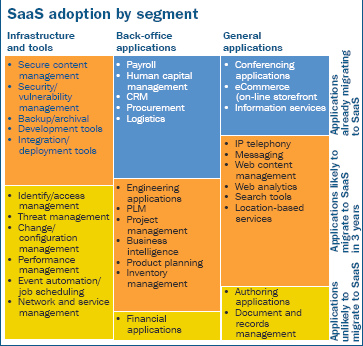(Updated)
“It takes 70% to 100% more capital to fund a SaaS company to break-even than a traditional perpetual license company. It also takes 2 to 3 times longer to get there.” said Michael Skok of North Bridge Venture Partners at a Mass Technology Leadership Council session yesterday. Don Dodge reports in a detailed post, which is well worth reading in full.
- SaaS companies need an average of $35M in VC capital, versus $20M for a similar perpetual license company.
- It takes 6 to 7 years to get to break even
- Public equity markets pay a 10% to 20% premium for predictable revenue streams
- SaaS companies move faster than big companies. They can introduce new features instantly versus waiting for the next major release. Think years.
- SaaS requires an architecture that supports end user customization
- Industry standards are critical for interoperability
- Steady state business models require 15-18% for engineering and 30-35% for Sales and Marketing.
Obviously this comparison is about Enterprise Software, Consumer applications are faster to develop, startups often don’t even take VC investment and get to market or get acquired after limited Angel investment – if any at all.
The above points are fact-based, learned from NBVP’s investment in 8 SaaS companies. Yet I feel comparing enterprise software startups with the SaaS (Software as a Service) model vs. the traditional perpetual license model is an academic exercise, since it does not represent a real choice. I’m meeting VC Partners weekly at various SVASE and other events, and I’m hearing a consensus: no software VC in the Valley invest in the traditional enterprise license model.
There are estimates that about 10% of all software sold is SaaS today, but investors have look out years ahead, and the writing is clearly on the wall: only SaaS gets funded today.
Related posts:
Update (5/23): Hello “On Demand” hype machine by SiliconBeat’s Matt Marshall list some of the lates On-demand investments, at ever-increasing valuations.
Tags: SaaS, On-Demand, Enterprise Software, Venture Funding, VC funding, VC Investment, startup, startups, SVASE






Recent Comments